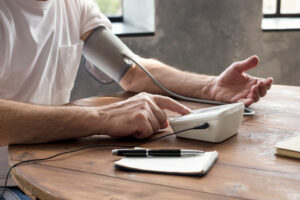Many people consider flat feet a harmless condition, something they are simply born with. While it’s true that many individuals with flat feet live without any issues, ignoring the condition when it causes discomfort can lead to significant problems down the line. Understanding the potential long-term complications of flat feet is essential for protecting your overall joint health. The pain isn’t always confined to the feet; the altered mechanics can affect your entire body. Knowing the common flat feet pain locations and when to seek help can prevent minor aches from turning into chronic, debilitating issues. Get a consultation with the best Podiatrists in Brooklyn.
The Kinematic Chain: Why Flat Feet Affect Your Whole Body
Your body operates as a connected system, often called a kinematic chain. Your feet are the foundation of this chain. When the foundation is unstable due to collapsed arches, it sets off a series of misalignments that travel up the body. This is why untreated, symptomatic flat feet can lead to pain and dysfunction far from the source. The body tries to compensate for the poor foot posture, putting unnatural stress on other joints and muscles.
Long-Term Complications of Flat Feet
Over time, the cumulative stress from poor foot mechanics can lead to a variety of chronic conditions. Here are some of the most common long-term complications associated with untreated flat feet.
- Chronic Foot and Ankle Pain
This is the most direct consequence. The specific flat feet pain location can vary, but common areas include:
- Plantar Fasciitis: The collapse of the arch puts continuous strain on the plantar fascia, the thick band of tissue running along the bottom of your foot. This can lead to inflammation and chronic heel pain.
- Posterior Tibial Tendon Dysfunction (PTTD): This tendon is a primary supporter of the arch. In people with flat feet, it is often overworked. Over time, it can become inflamed, stretched, or even torn, leading to worsening of the flat foot deformity and significant pain along the inside of the ankle.
- Bunions (Hallux Valgus): The instability caused by flat feet can lead to changes in the forefoot, including the development of a painful bony bump at the base of the big toe.
- Hammertoes: An imbalance in the tendons and ligaments of the foot can cause toes to bend abnormally at the middle joint.
- Knee Pain
This is one of the most common complaints outside of the foot itself. When the arch collapses, the foot tends to roll inward (overpronation). This causes the lower leg to rotate internally, which disrupts the normal tracking of the kneecap (patella). This can lead to:
- Patellofemoral Pain Syndrome (Runner’s Knee): A dull, aching pain at the front of the knee.
- Increased Risk of Arthritis: The chronic misalignment and added stress can accelerate wear and tear on the knee cartilage, leading to osteoarthritis.
- Hip and Lower Back Pain
The kinematic chain reaction continues up to the hips and spine. The internal rotation of the leg can alter the position of the hip joint, leading to muscle imbalances and strain. This pelvic tilt forces the spine out of its natural alignment to keep your head level. Over the years, this can contribute to chronic lower back pain, muscle fatigue, and even conditions like sciatica.
- Arthritis in the Feet and Ankles
The abnormal stress placed on the joints within the foot due to a collapsed arch can lead to the premature breakdown of cartilage. This can result in painful arthritis in the midfoot and ankle joints, causing stiffness, swelling, and loss of mobility.
When Should You See a Podiatrist?
It’s crucial to distinguish between asymptomatic flat feet and those that are causing problems. If you experience any of the following, it is time to seek a professional evaluation from a podiatrist:
- Persistent pain in your feet, ankles, knees, hips, or lower back.
- Feet that tire easily or feel achy after standing.
- Swelling on the inside of your ankles.
- Difficulty with activities you once enjoyed due to pain.
- Noticing that your shoes wear out unevenly and quickly.
A qualified podiatrist can provide a comprehensive diagnosis and create a treatment plan to prevent these long-term complications. Visiting a specialized podiatry clinic in Brooklyn will give you access to experts who can perform a gait analysis and determine the best course of action.
Treatment doesn’t always mean surgery. Often, conservative measures can be highly effective. A podiatry clinic in Brooklyn can offer solutions like custom-molded orthotics, which support the arch and correct alignment, thereby relieving stress on your feet and the rest of your body. Physical therapy and proper footwear recommendations are also key components of a management plan.
Ignoring the warning signs of symptomatic flat feet can have serious consequences for your mobility and quality of life. By addressing the root cause of your pain with the help of a professional, you can protect your joints and stay active for years to come. At Doral Health & Wellness, we have Podiatrists with extensive education and expertise. Our address is 1797 Pitkin Avenue, New York, NY 11212. To make an appointment, please call + 1 718 367 2555, or register your information and make direct contact with us at https://yuz88hfiyh7.typeform.com/Doralintake or send an email to info@doralhw.org.






